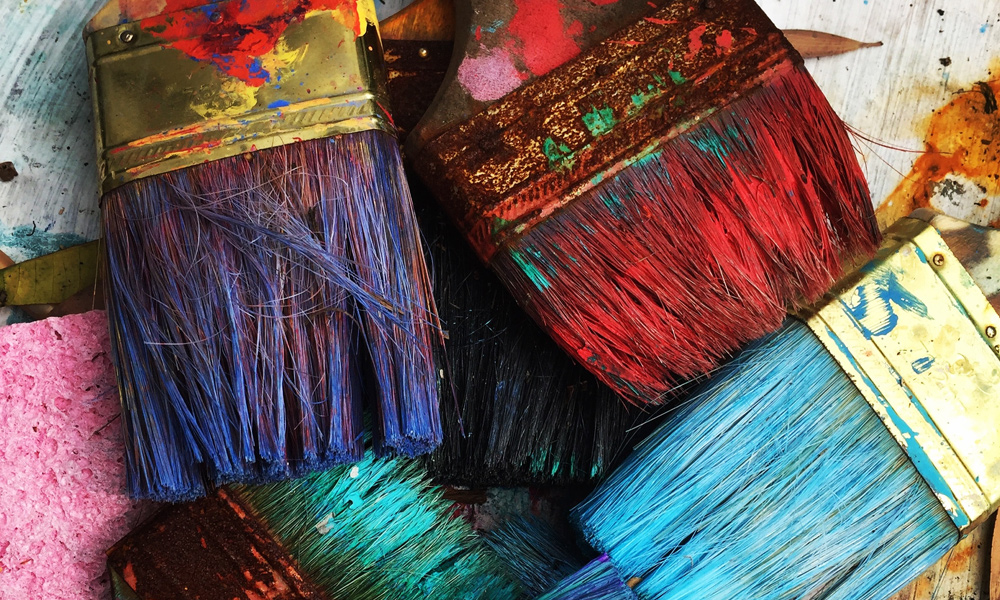Best Way to Clean Paint Brushes
Paint brushes are fairly easy to use, but they can seem like a huge hassle to clean, especially if you’re working on a tight schedule or need to paint something else. Many people use rollers or paint guns instead of brushes to avoid cleaning them as often. But it’s actually not too difficult to clean up your paint brushes – you just need to know how to do it.
Best of Machinery has put together this quick guide on the best way to clean paint brushes, along with some tips to save time!
Wet or Dry?
Most people let their brushes dry before cleaning them off, either intentionally or simply because they forgot. This can actually make it much harder to get the paint brushes perfectly clean. It might even ruin them. Buying new brushes isn’t too difficult, but it’s still annoying when caked-on paint destroys them.
Try to wash your paint brushes while they’re still wet before the paint has a chance to set. During longer painting jobs, it might be easier to wash your paint brush after you finish each wall or surface. This stops the paint from forming a thin layer over the bristles. Just make sure you dry off the brush before dipping it in the paint. Otherwise, the water might dilute the mixture, thinning and discoloring it.
Don’t Leave it Soaking for Too Long
A common mistake new painters make is leaving the brush in the paint can rather than placing it on a separate surface. The longer you leave the brush in the can, the more paint will stick to it. This will leave you with a big blob of paint that you’ll need to try and shake off before you can use the brush properly. If you stay there too long, it might even start to dry out. If it solidifies, you’ll have to break it off yourself or throw it away.
You can also run into the same problem when cleaning the paintbrush. If you leave a brush in water for too long, it’ll start to soften, and the bristles might start to fall off (or even dissolve). At worst, the bristles might even come off while you’re painting, getting stuck in the layer of paint and ruining the whole project. Water can also seep into the handle, which might make some flimsier brushes fall apart the next time you use them.
Storing the Brushes
Some people prefer to store their brushes bristles-up, others prefer them pointing downwards, and a lot of people will just leave them on their sides. However, these can all have different effects on the brush’s quality and durability, regardless of whether they’re soaking wet or bone-dry.
When you leave your brush to dry, you should never rest it on its bristles – this will spread them out, widening the brush head and making it less useful for major painting jobs or any painting at all. However, if you have a brush-holder that keeps them in the air while they’re pointing down, you can use it to help your brushes dry evenly – you just need to make sure they won’t fall.
If the paintbrush is stored upright while wet, the water will go down into the handle and cause damage. It might even make the bristles droop ‘backward’ due to the extra weight of the water. Laying your brushes on their side is the best solution, but you’ll need something that can absorb the water – even something as simple as a cloth or sponge should be enough.
When storing dry brushes, you generally follow the same rules but for different reasons. However, you’ll be able to store them up right now that the water’s gone – paintbrush pots can be a useful alternative to just keeping them in a box.
Cleaning a Brush Quickly
The actual technique behind cleaning a brush is quite simple and doesn’t take very long. To start, simply wipe the paint-covered brush on the inside rim of the can – this will remove most of the ‘loose’ paint from your brush. If there are still a few obviously clumpy spots that you can’t scrape off, rub the brush with some spare newspaper to eliminate any excess paint.
Once that’s done, you can wash the paintbrush as normal – some people prefer running water, and others rely on buckets of soapy water. It doesn’t make much of a difference as long as you can get the paint out of the bristles. If you didn’t use running water from the very start, make sure you rinse it anyway, just in case.
For more expensive or important brushes, consider wrapping the head in heavy, absorbent paper or cloth to let it retain its shape while drying. This is completely optional, but it’s a great way to ensure that hard-to-replace brushes don’t get ruined with repeated use. For cheaper brushes, it might be easier to leave them on an absorbent surface since the damage will be fairly minimal and only becomes obvious after long periods of frequent painting.
